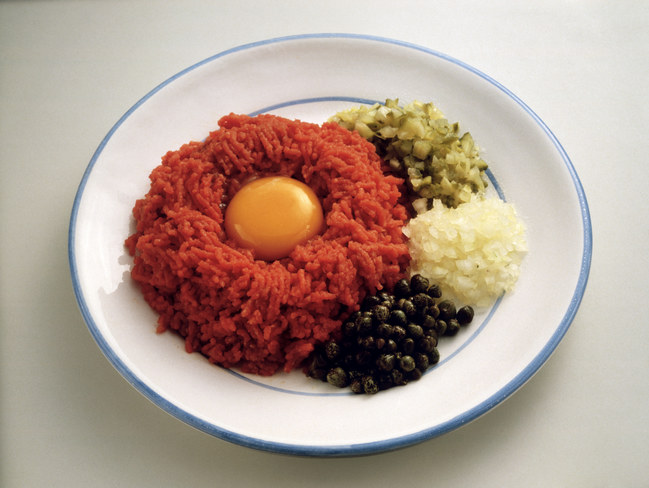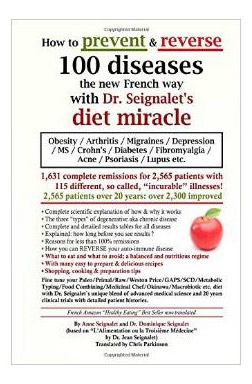The main principles
 Hypotoxic diet, detox, ancestral, original and even paleo diet are the terms used indiscriminately to describe this way of eating. Based on scientific arguments and also on a clinical study conducted on 2,500 persons, the choice of foods in the Seignalet diet is based both on fundamental research and clinical research. The aim is to limit the porosity of the small intestine (hyperpermeability).
Hypotoxic diet, detox, ancestral, original and even paleo diet are the terms used indiscriminately to describe this way of eating. Based on scientific arguments and also on a clinical study conducted on 2,500 persons, the choice of foods in the Seignalet diet is based both on fundamental research and clinical research. The aim is to limit the porosity of the small intestine (hyperpermeability).
The daily diet plan totally excludes the following
1. All animal milks (cow, goat and sheep) and their derivatives: butter, cheese, cream, yoghurt, ice cream etc.
No animal in its wild state naturally consumes the milk of another species. Animal milks are very different from human milk; according to Jean Seignalet, their molecular structure is unsuited to the digestive enzymes in many people.
2. Mutated or indigestible cereals (wheat, maize, rye, barley, oats, kamut, spelt, small spelt and millet).
In contrast, patients are allowed to eat non-mutated cereals (rice, buckwheat, sesame).
These cereals have undergone many genetic mutations in 7,000 years and the molecular structure is very different from that of the initial cereal. Wheat, for example, has changed from 7 to 21 pairs of chromosomes; the first maize measured 7 cm while today’s plants can reach 6 metres. Certain cereals such as small spelt have proved harmful to many patients.
This first principle of exclusion is essential and may be enough in some cases. It must be followed strictly, however. Reintroducing these foods can be considered when the improvement in health has been achieved. It becomes easy for patients to judge their own sensitivity to these foods. If the unwanted symptoms come back, the food is not suitable for the genetic terrain of the person in question.
Eat products raw or cooked at temperatures below 110°C.
This second principle is followed in a different way from one individual to another. Certain "Seignalet" books or blogs recommend recipes with long cooking times, cooking over high heat and sometimes even frying. Their authors are communicating their own experience of the diet. They tolerate these cooking processes well, which is not the case for everyone.
Since the enzyme repertoire varies from one individual to another, some people are very sensitive to cooking processes because of the molecular changes generated by heat which makes lipids and animal proteins in particular indigestible. Excessive cooking of oils, meats, egg yolk and oleaginous plants may be an obstacle to the effectiveness of the diet. It is advisable to limit cooking or to eat them raw until an improvement has been achieved. It is then possible to consider reintroducing them, so patients can judge their impact on their own health.
Finally, a proportion of foods should be eaten raw every day to keep the quantity of vitamins and minerals (particularly calcium) that they contain and to optimise nutritional intake (fruit and raw vegetables).
http://www.fda.gov/Food/ResourcesForYou/Consumers/ucm255180.htm
Consume cold-pressed raw virgin oils every day.
To meet the body’s various needs, it is important to consume different oils: olive oil, evening primrose oil (or borage) and raw nuts (soya or colza) supply all necessary fatty acids. For cooking oils when necessary, choose olive oil and groundnut oil which are the most resistant to heating.
Other advice:
1. Choose whole salt and sugars even though the consumption of refined sugar is not an obstacle to the effectiveness of the diet.
2. Give preference to organic foods that contain fewer toxic products such as pesticides.
3. Finally, vitamin and mineral supplementation at physiological doses and in balanced proportions is recommended. This is a useful adjuvant because current production methods often supply foods that have been grown too quickly and are less rich in nutri foods.
There are many other dietary recommendations which are certainly sound, such as eating fruit between meals for example or totally excluding white sugar. You can include these ideas in what you choose to eat but the Seignalet diet remains effective as it is.
These other recommendations are not necessary for the diet to work even if they are a “plus” in the daily diet.

